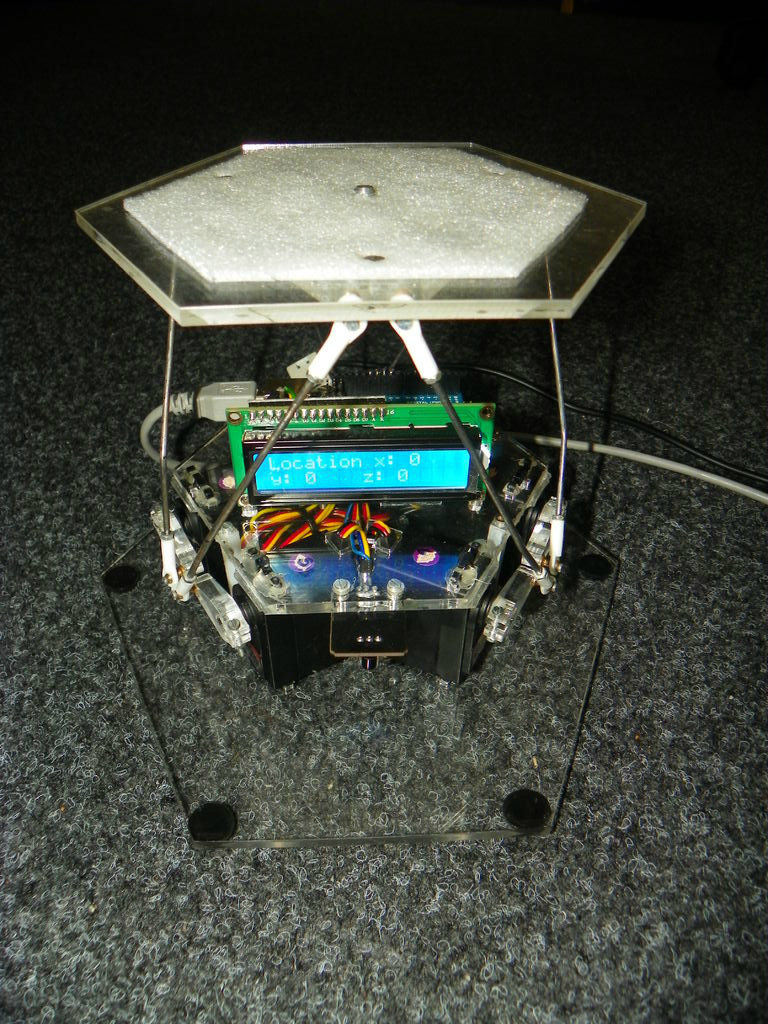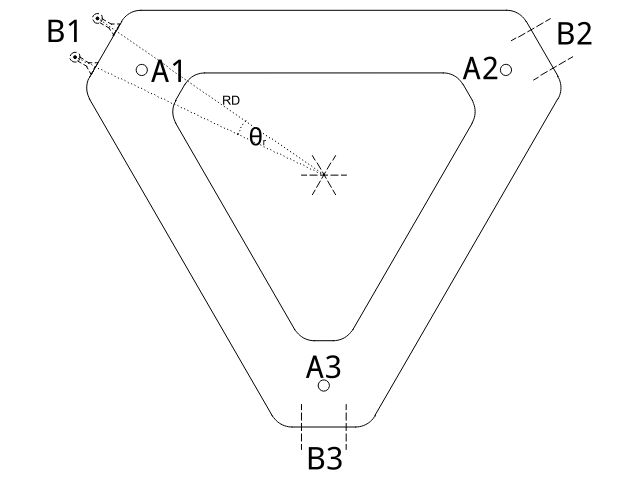This instructable is about building a Rotary Stewart Platform. It allows to position its moving platform in six degrees of freedom. This specific platform is designed to be able to position a DSLR or any other digital camera.
This version of Stewart Platform uses instead of linear actuators just ordinary hobbyist servos for motion. Whole platform is controlled by an Arduino Uno, it computes all necessary equations to get the platform into right position and also controls servos.
Video of movement of completed platform can be seen here. Quality is not very good, but camera with better picture was at the time of capture on the platform. It was set-up for random position every 4 seconds.
Some informations about platform:
- weight of load can be up to 2Kg (platform tested with 1.5Kg with no observable problems during moves in whole range of movements), theoretically platform should be able to cope with even higher loads, but it wasn’t tested with such load
- low power consumption – with load of 1kg was consumption of around 5W.
- very good fineness of moves – smallest possible move is around 1mm
- perfect ability to repeatedly achieve the same positions.
- good stability of platform even with big loads.
All source files for platform (templates, Arduino source code, code for communication library can be found here.
Price of platform mostly depends on the price of servos and of the Arduino board. Cutting of parts, all other needed parts cost at most 50$. Total price can be around 150$.
IrDA and LCD with I2C interface were bought from ebay, they are very cheap (together around 10$)
Parts of platform are cutted from acrylic, i used 4mm acrylic.
Needed tools:
- drill
- screwdriver
- tools needed for soldering and creation of PCB for connecting external power supply
- measuring tools
- double sided tape
In case of any questions, feel free to contact me.
Step 1: Building moving platform
We start by cutting parts from acrylic, here we will use templates from files platform_bot and platform_top. This platform is divided into two parts for better universality, just by changing top part of platform you can adapt it for various purposes. They are put together using screws placed in holes A1-A3.
Dimensions are chosen with respect to size of ordinary DSLR. Platform can be changed to be smaller or bigger.
At denoted places B1-B3 in bottom part of platform it is needed to drill holes which are used for anchoring of connecting rods. On third picture you can see proper way of doing that. These weird deformations in acrylic were caused by using CA glue to fix screws in acrylic.
On top of the moving platform it is necessary to place a piece of rubber or foam and fix it there with double sided tape. It will prevent unwanted rotations and movements of camera on the platform.
Length of connecting rods should be around 12cm and they should be bended as can be seen on picture of completed platform. This bend greatly improves range of movements. Length of rods should be chosen so that the angle between servo arms in horizontal position and the rod is around 70°.
For more detail: Arduino controlled Rotary Stewart Platform


